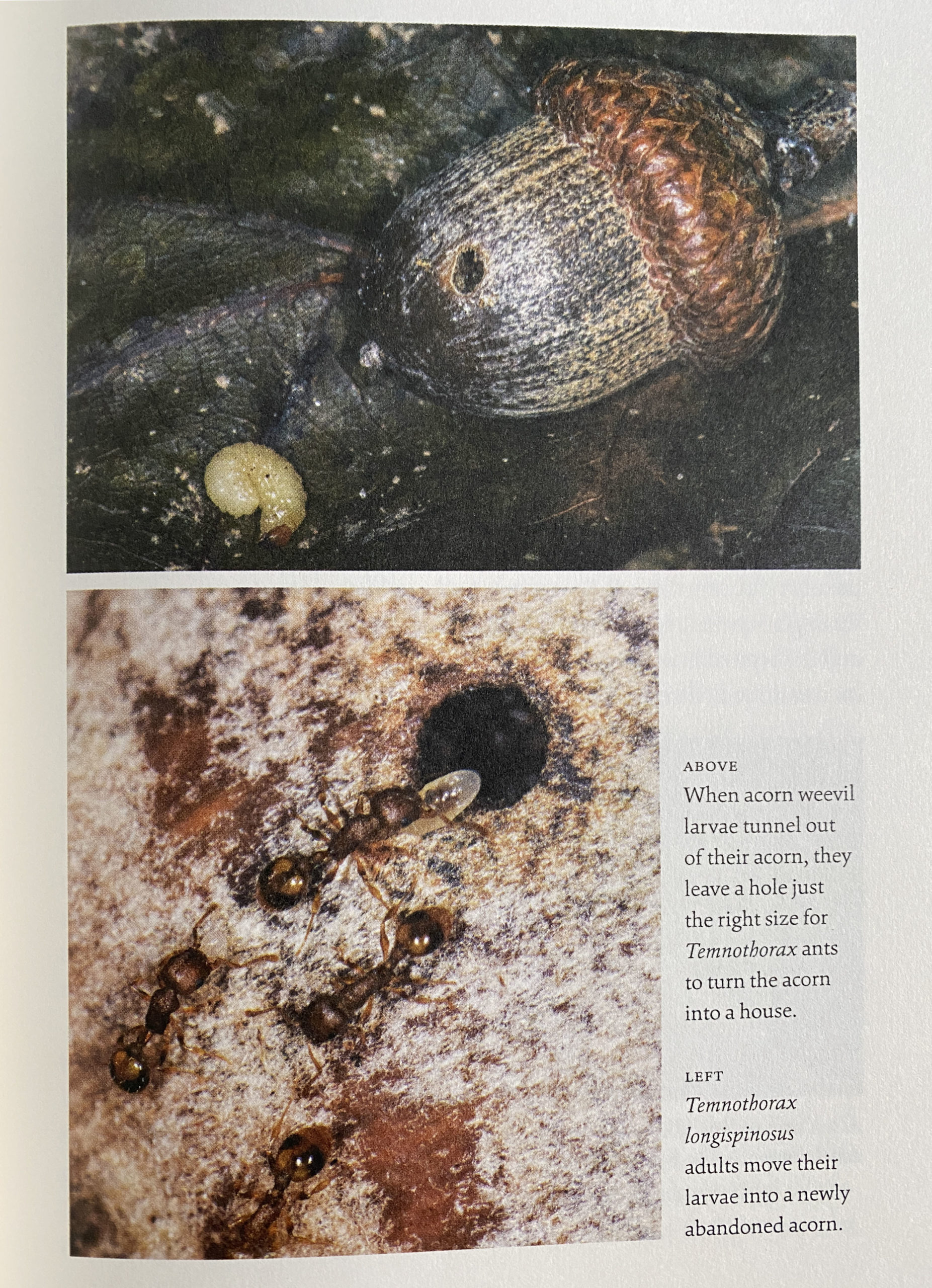
The Nature of Oaks:
The Rich Ecology of Our Most Essential Native Trees
Douglas W. Tallamy, 2021
Reviewed by Sloane Robinson
Oak trees are consistently regarded among the most majestic and beautiful specimens on our planet. They are celebrated in folklore and poetry. Generations of children have sought them out as good climbing trees.Treaties have been signed under the branches of oaks. The species genus Quercus is important as well as beautiful, but just how important is surprising. In his third book, The Nature of Oaks: The Rich Ecology of Our Most Essential Native Trees, Douglas Tallamy illuminates us on these “keystone” plants serving as a base for our complex food web.


Tallamy, a professor in the Department of Entomology and Wildlife Ecology at the University of Delaware, tells the story of the long and diverse ecology of oaks through the lens of observation of a white oak he started growing in his own yard from an acorn he found while on a walk with his wife near their home in Pennsylvania. Beginning with the month of October, the author takes us on a year’s long journey of oak trees and the wildlife they support. One example is the symbiotic relationship between the acorn weevil that lays its eggs in the interior of the acorn, and the ants that follow by way of the holes that weevil drill into the acorn. Nothing is wasted in nature.
The statistics the author reports are staggering. In America “about 75% of the
insect food required by birds and other animals is produced by just a few plant genera,” and oaks support the greatest number of these animals by a long shot. (pg 38) The author reminds the reader all insects rely on plants. When plant diversity is reduced in a landscape so is insect diversity. With a loss of insects, you have a loss of bird population. (pg 34) We are all part of the same story.
Why is Doug Tallamay giving us this book now? We sit upon a precipice. As more of our wild land is developed and fewer oak trees are allowed to propagate and grow, our complex food web shrinks. When choosing trees for our own home landscape, we’re discouraged to plant an oak for any number of misguided reasons.

With over 90 oak species native to our country, there’s likely to be one that will fit any home landscape. Tallamay rightfully surmises, “A yard without oaks is a yard meeting only a fraction of its life-support potential.” (pg 39)


If you’re looking for a field guide to identify oak trees in your neighborhood, this is not the book for you. Instead, Tallamy seeks to educate and, perhaps, inspire. The quantity of information the author provides on insects, specifically caterpillars and moths, can be a bit overwhelming. You’ll want to re-read and re-read many of the chapters. Tallamy opens our minds to the vastness of creatures sustained by oak trees and, in doing so, gives a good case for planting Oaks.
The Nature of Oaks, by Doug Tallamy, 2021.
200 pages.











Beautifully written review